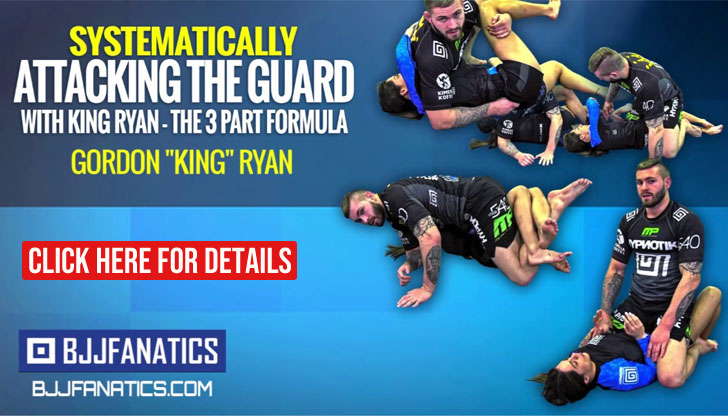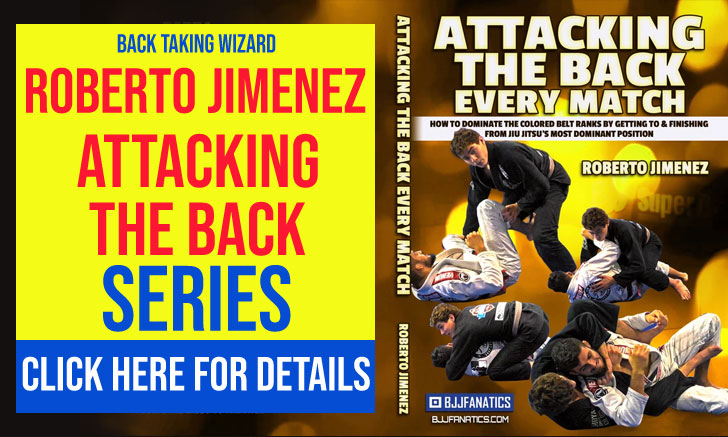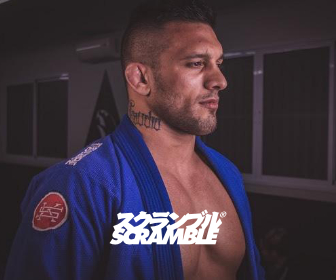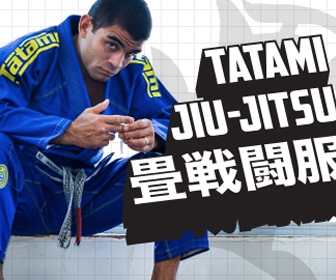The inverted guard, also known as Roleta guard, tornado guard or upside down guard, is a creative grappling position developed in the 1990’s by Roberto Magalhães (also known as Roleta). The term upside down/inverted guard is utilized when the guard player (fighter on the bottom of a grappling match) goes upside down and uses his legs and grips to keep the fight at a desired distance. The upside down is a creative way to deal with a strong ‘pressure’ style of guard passing, and it opens a wide variety of attacks to the bottom fighter, from omoplatas, to triangles & inverted triangles, leg locks and a number of sweeps (reversals) being the ‘helicopter sweep’ the most common. Though the position was a creation of Magalhães, several other fighters have had a strong input on the position’s development, namely Ryan Hall and Roberto ‘Cyborg’ Abreu, Roberto having developed a slightly different approach to the situation, calling it the tornado guard.
The Inverted Guard History
Like most grappling positions, going upside down (inverting) when on the bottom to prevent a guard pass, was most certainly part of ground fighting before Mr Roleta, however, it was him who incorporated this movement into a “go-to” move, developing from it several positions. With Roberto Magalhães’ lanky frame and flexible nature, this type of guard appeared to be a match made in heaven for the former Gracie Barra prodigy. During the 1990’s Gracie Barra had arguably the most creative Jiu Jitsu team of all time, with many of today’s most common positions being developed at their famous Espaço Vital headquarters, including the spider guard and the half guard.
Roleta’s inverted guard started looking like a finished piece by the time Magalhães was a brown belt. This was so evident that his coach, Carlinhos Gracie promoted him to black belt before the 1996 World Jiu Jitsu Championships, seeing Roberto’s ingenious position as the perfect solution to Walid Ismail‘s strong guard passing game, Wallid was seen as the heavy favorite to win the tournament. The two met at the semi finals of Jiu Jitsu’s most important competition, and Carlinhos hit it on the nail as Roleta won the fight with a sweep from his inverted guard, just seconds from the end (see the fight below). Roberto would go on to win the Mundial. The inverted guard and Roleta would carry on in the sport for many years, making a definitive mark in the landscape of Brazilian Jiu Jitsu, and defining a generation of guard players and inverters.
Roberto ‘Cyborg’ Abreu started working on his own version of the inverted guard, calling it, the tornado guard. When asked about when he came up with the position by BJJ Heroes, Abreu replied:
The tornado occurred from a position I started developing from half guard when I was a blue belt. I’ve always been creative, flexible and explosive. The combination of all three kept my mind open to create my own movements.
Although both positions are very similar, the tornado guard has some peculiarities that differ from the inverted. Roleta’s guard was more versatile/mobile, being played from a variety of positions, including turtle, Cyborg’s tornado is played with both shoulder blades on the ground. Another difference would be that the tornado tends to appear from a half guard situation, while the Roleta appeared from many different open guard angles.
- Roberto Magalhães
- Roberto Abreu
- Ryan Hall
- Vinicius Marinho
- Caio Terra
- Joao Miyao
- Paulo Miyao
- Rubens Charles
Andris Brunovskis vs Christopher Broudnax
Roberto Cyborg vs Abmar Barbosa
Roberto Cyborg vs Braulio Estima
Roleta vs Walid Ismail (World Championship 1996)
Ryan Hall inverted guard concepts
Roberto Cyborg showing the tornado guard
Roberto Roleta, armbar from inverted guard
















Chuck Anzalone is one the pioneers of the inverted guard here in the U.S. his videos and his instructional precede many of the practioners in the list.